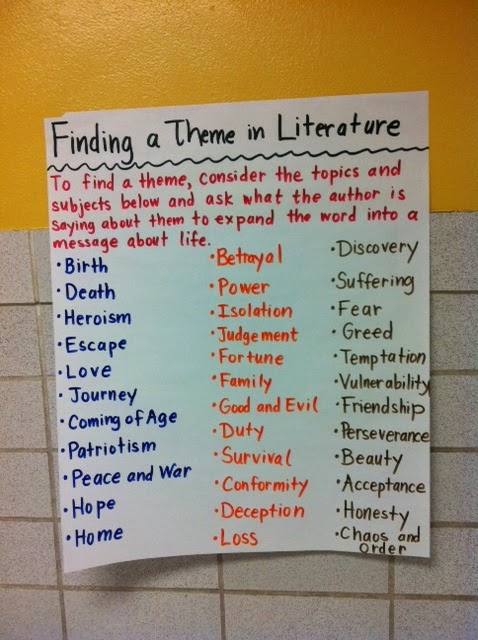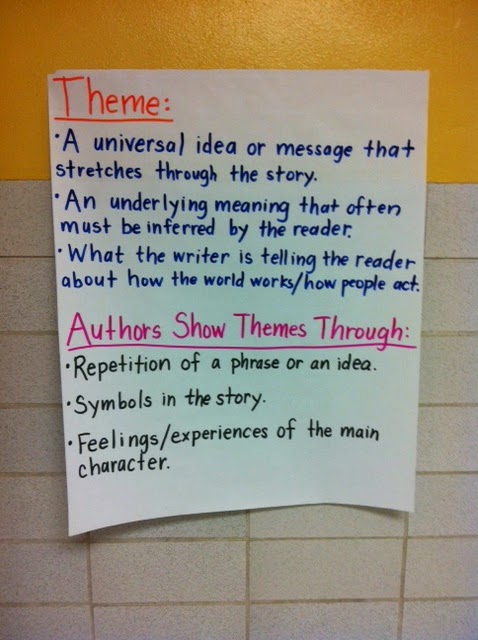Like any teacher, I have minilessons that fail miserably, some that I would say are “just okay,” and others that I feel really make a difference. The tricky thing is, it’s sometimes quite hard to predict which are going to flop and which are going to make a big difference. This past week, I had one of those minilessons that made teaching feel worthwhile. I was teaching students how to identify theme in a text through closely reading what the author is saying in important excerpts. We had just finished reading The Art of Racing in the Rain the previous day as an Interactive Read Aloud, and along with teaching theme, I wanted to do a final activity with our IRA text to provide some closure.
Here is the minilesson that I did:
I begin every minilesson with a “Do Now.” On this particular day, I had my students “sentence stalk” a sentence from our Interactive Read Aloud, The Art of Racing in the Rain to notice anything about grammar, conventions, author’s craft, etc. My student have taken on so much language about conventions through sentence stalking this year versus direct grammar instruction. I also like pulling sentences from our IRA for sentence stalking because it gets students thinking deeply about the author’s craft of a book they are connected to. Additionally, we have been talking a lot in Writing Workshop about using a variety of sentence structures when writing to keep our readers interested and create sentence fluency. Therefore, along with the sentence stalking, I asked them to mimic the sentence structure from the mentor sentence in a sentence of their own.
After the “Do Now,” students copy down the minilesson statement for the day. I use the Common Core State Standards, The Continuum of Literacy Learning, and what I notice from my students to create minilessons in Reading and Writing Workshop applicable to where they are as learners and where they need to go next. When students copy down the minilesson, we discuss its meaning and the purpose. A minilesson should always focus in on a particular reading or writing skill, not a task you want students to complete as readers or writers.
Next comes the modeling portion of the minilesson. In this case, I read an excerpt from The Art of Racing in the Rain to students and shared my thinking in relation to what I inferred the author, Garth Stein, had developed as a theme through closely reading this excerpt and what I knew as a reader from what happened in the rest of the text. I then asked students what they noticed about my response. Students answered with noticings about what I included in my response and how I structured it.
With a gradual release of responsibility model, the next portion of the minilesson is allowing my students a chance to practice the skill with me still being there and with the support of a classmate. For this particular “have-a-go,” I read another passage from the text and asked students to talk to one another in partners to determine what theme was being portrayed in that particular passage.
Finally, it’s time for students to apply this minilesson reading skill independently. I copied off the last chapter of The Art of Racing in the Rain for them and allowed students to reread the last chapter, focusing in on a particular excerpt they believed portrayed a theme. Students then constructed a response explaining how their selected passage portrayed the theme they identified.
The most important part of a minilesson, in my opinion, is the share portion. For this minilesson, I had students share their selected excerpt with the class, and explain the theme they inferred based on that passage. I had students sit in a circle for this particular share to ensure everyone was using proper listening techniques. I also had students write the themes their classmates came up with underneath their minilesson statement as they listened to everyone’s responses.
I was amazed at what students came up with for their themes. I realized through this activity that this text had a large impact on my students based on the themes they were inferring and taking away from the text. A huge part of minilessons are ensuring students are taking the learning forward and have reference points within the classroom to refer back to their learning and quickly trigger memories of how to think as readers and writers. Our anchor charts for theme posted in our classroom are below:
By using the gradual release of responsibility to set up learning for students, students are able to take on reading skills independently. I am excited as the year goes on to continue to experiment with close reading. The biggest thing to keep in mind with close reading is it is all about students finding the main idea/author’s purpose in a text and can be found/identified through multiple lenses. It’s important that we don’t always send students off to do a close read without a particular lens. In the case of this minilesson, the lens I had my students looking from was themes/main ideas.
Ideas for other lenses to have students use for close reads are:
-Illustrations, graphics, text features
-Narrator/Point of View
-Language, word choice
Theme is something I have always really struggled teaching students year after year because there is no easy way to explain how to find themes. They are inferred by the reader. This year the biggest breakthrough for me, as a reading teacher, is the realization that using Interactive Read Aloud to model how to use reading skills makes them much more tangible for all students in my classroom.















